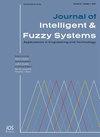基于多源变分域自适应的灾后建筑损伤检测
IF 1
4区 计算机科学
Q3 COMPUTER SCIENCE, ARTIFICIAL INTELLIGENCE
引用次数: 0
摘要
灾后及时发现建筑物损坏可以为挽救生命和减少损失提供支持和帮助。迁移学习的出现可以解决深度模型训练中难以获得多个标记样本的问题。但是,不同的场景之间存在一定程度的差异,这可能会影响传输性能。此外,在现实中,数据可以从多个历史场景中收集,但不能使用单源域自适应方法直接组合。为此,本研究提出一种多源变分域自适应(MVDA)方法来完成灾后建筑评估任务。MVDA方法包括两个阶段:首先,对每对源域和目标域在特定特征空间中的分布分别进行对齐;其次,使用特定于领域的决策边界对齐预训练分类器的输出。该方法最大限度地利用了历史场景中的相关信息,解决了当前场景中图像分类不一致的问题,提高了从历史到当前灾难场景的迁移效率。利用灾后飓风数据集,通过两个具有挑战性的多源传输任务验证了所提出的方法。两种任务的平均准确率达到83.3%,与现有方法相比提高了0.9%。本文章由计算机程序翻译,如有差异,请以英文原文为准。
Post-disaster building damage detection using multi-source variational domain adaptation
Timely detection of building damage after a disaster can provide support and help in saving lives and reducing losses. The emergence of transfer learning can solve the problem of difficulty in obtaining several labeled samples to train deep models. However, some degree of differences exists among different scenarios, which may affect the transfer performance. Furthermore, in reality, data can be collected from multiple historical scenarios but cannot be directly combined using single-source domain adaptation methods. Therefore, this study proposes a multi-source variational domain adaptation (MVDA) method to complete the task of post-disaster building assessment. The MVDA method consists of two stages: first, the distributions of each pair of source and target domains in specific feature spaces are aligned separately; second, the outputs of the pre-trained classifiers are aligned using domain-specific decision boundaries. This method maximizes the relevant information in the historical scene, solves the problem of inconsistent image classification in the current scene, and improves the migration efficiency from the history to the current disaster scene. The proposed approach is validated by two challenging multi-source transfer tasks using the post-disaster hurricane datasets. The average accuracy rate of 83.3% for the two tasks is achieved, obtaining an improvement of 0.9% compared with the state-of-the-art methods.
求助全文
通过发布文献求助,成功后即可免费获取论文全文。
去求助
来源期刊

Journal of Intelligent & Fuzzy Systems
工程技术-计算机:人工智能
CiteScore
3.40
自引率
10.00%
发文量
965
审稿时长
5.1 months
期刊介绍:
The purpose of the Journal of Intelligent & Fuzzy Systems: Applications in Engineering and Technology is to foster advancements of knowledge and help disseminate results concerning recent applications and case studies in the areas of fuzzy logic, intelligent systems, and web-based applications among working professionals and professionals in education and research, covering a broad cross-section of technical disciplines.
 求助内容:
求助内容: 应助结果提醒方式:
应助结果提醒方式:


